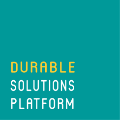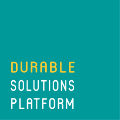The Durable Solutions Platform (DSP), Development Initiatives, Action Against Hunger (ACF), Danish Refugee Council (DRC), International Rescue Committee (IRC), Norwegian Refugee Council (NRC), and Save the Children published new research exploring lessons for how financing can better support pathways to durable solutions for Syrian refugees in the Region, including Jordan, Lebanon and Kurdistan Region of Iraq (KRI). The key findings of the research are summarized Here.
The Research Critically Examines the Existing Displacement Financing Architecture in Jordan, Lebanon and KRI to explore how it can better respond to medium- and longer-term priorities and needs of the Syrian refugee displacement context and support pathways to durable solutions.
Selected Key Recommendations:
- Using financing to create a more enabling environment for medium- to longer-term outcomes: Bilateral and multilateral donors and IFIs should strike a balance between coupling financing to support the wider enabling environment, including economic growth and job creation, while ensuring financing specifically targeted to refugees. In the short- to medium-term, donors should make greater use of grant funding to increase leverage in promoting a more enabling
- environment for refugees and influencing policy reform.
- Prioritizing and making hard choices on resource allocations: Donors need to invest in generating evidence on which programmatic models have the greatest impact in supporting refugee economic self-reliance – allowing pilots to learn from mistakes, iterate and improve - and base their funding on that evidence.
- Ensuring coherence and streamlining coordination at a macro-level for the delivery of all humanitarian and development assistance: Supporting pathways to durable solutions requires coherence and coordination across the humanitarian-development-peace nexus to ensure that limited resources are used as effectively and efficiently as possible. In Lebanon, it is questionable whether having multiple response frameworks is facilitating coordination, and in the short-term, a collective process should review existing coordination processes and structures.
- Committing to financing approaches that lead towards better medium-term outcomes: Donors need to capitalize on the growing body of learning generated from displacement financing specific instruments to inform future programming and funding approaches to build on their successes. Specifically, these instruments have demonstrated that supporting (economic) self-reliance requires multiyear funding commitments to support comprehensive packages of support – donors need to be willing to make the necessary investments and scale-up quality funding across the board.
Selected Key Kindings:
 Across the region, ODA is likely to remain the primary albeit increasingly constrained source of financing for displacement. Meeting needs in Syrian-refugee hosting areas is still largely dependent on short-term humanitarian funding, which is declining.
Across the region, ODA is likely to remain the primary albeit increasingly constrained source of financing for displacement. Meeting needs in Syrian-refugee hosting areas is still largely dependent on short-term humanitarian funding, which is declining.
 An enabling policy, legal and regulatory environment is fundamental to developing pathways to durable solutions - financing has and can positively influence political commitment among host governments but this influence is limited.
An enabling policy, legal and regulatory environment is fundamental to developing pathways to durable solutions - financing has and can positively influence political commitment among host governments but this influence is limited.
 Support to meet immediate needs will be needed alongside longer-term approaches for foreseeable future. A simple sequential transition from humanitarian aid to development assistance is not realistic in the current context of high levels of vulnerability, exacerbated by the Covid-19 pandemic.
Support to meet immediate needs will be needed alongside longer-term approaches for foreseeable future. A simple sequential transition from humanitarian aid to development assistance is not realistic in the current context of high levels of vulnerability, exacerbated by the Covid-19 pandemic.
 Providing financial support to inclusion through national systems with ODA is both necessary and difficult and may entail a potentially open-ended commitment
Providing financial support to inclusion through national systems with ODA is both necessary and difficult and may entail a potentially open-ended commitment




